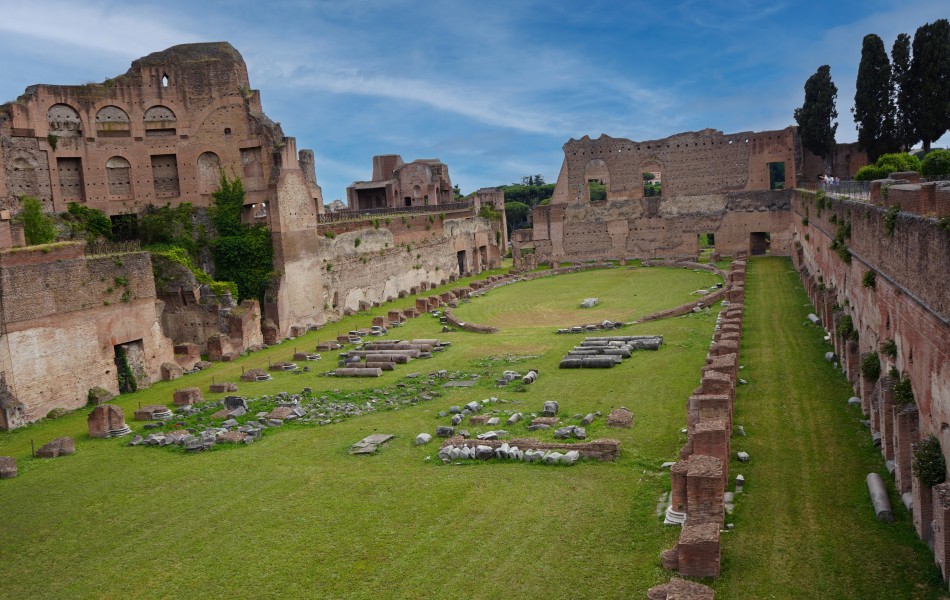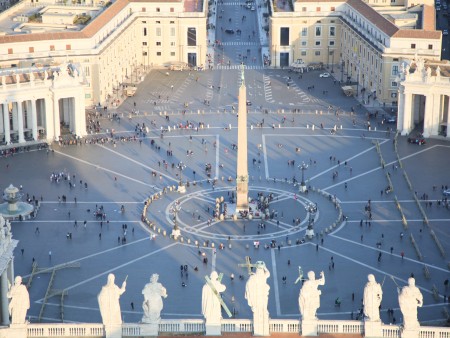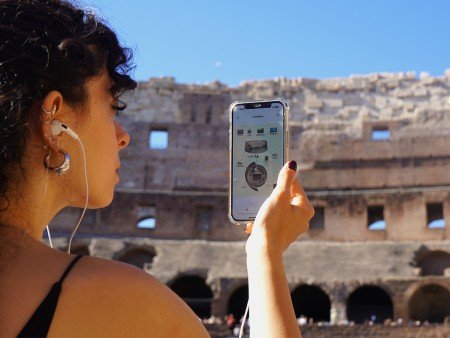Domitian’s Playground on the Palatine Hill: The stadium fit for a god-emperor
Know more about the Domitian’s Stadium, blending Greek-inspired culture with Roman grandeur in Emperor’s Domitian spirit

10 January 2025
Rome Travel GuideThe name Domitian is one that evokes a complex legacy, marked by power, grandeur, and controversy. Born in 51 AD as the younger son of Emperor Vespasian, Domitian belonged to the Flavian dynasty, a family that rose to prominence during one of Rome's most turbulent periods. Domitian’s reign as emperor, spanning from 81 to 96 AD, was one of immense architectural ambition and political transformation, yet also of autocracy and fear. His Domus Flavia, or Flavian Palace, on the Palatine Hill was a monumental statement of imperial authority, and within it lies the so-called "Domitian Stadium," a structure that provides key insights into the emperor’s personality, priorities, and Rome’s cultural landscape during his rule. To truly immerse yourself in the grandeur of ancient Rome, pair your visit to the Domitian Stadium with an exclusive Private Colosseum Tour with Roman Forum and Palatine Hill.
Why Is There a Stadium on the Palatine Hill?
The Palatine Hill was the symbolic heart of imperial Rome, traditionally associated with the city’s founding by Romulus. By the time of Domitian’s reign, it had become the exclusive domain of emperors. The Flavian Palace, which Domitian commissioned as his official residence, was a sprawling complex designed by the renowned architect Rabirius. It was an architectural marvel, consisting of opulent reception halls, private quarters, gardens, and, intriguingly, a stadium.
The Domitian Stadium, located within the palace complex, was not a public structure but a private one, serving as a venue for the emperor’s entertainment, training, and ceremonial events. Its inclusion within the palace demonstrates Domitian’s penchant for blending politics, spectacle, and leisure. The stadium was a space where the emperor could display his magnanimity to select guests, host games, or even stage elaborate ceremonies that reinforced his divine image.
The choice to build a stadium on the Palatine was also strategic. It allowed Domitian to incorporate the spectacle of Roman games into the private sphere of the imperial court, underlining his authority as the ultimate benefactor of public entertainment. While other emperors used structures like the Circus Maximus or the Colosseum to host games for the masses, Domitian’s stadium was a more controlled, exclusive environment.
What Is the Domitian Stadium?
The Domitian Stadium, also referred to as the stadium-shaped garden (Hippodromus Palatii), was not a stadium in the modern sense but rather an elongated, rectangular space measuring approximately 160 by 50 meters. Its layout resembles that of a circus or hippodrome, with a curved end that mimicked the chariot-racing tracks of the Circus Maximus. It was adorned with porticoes, statues, and fountains, reflecting the grandeur of the Flavian Palace as a whole.
The exact function of the Domitian Stadium has been debated among historians and archaeologists. Some suggest it was used as a private garden for the emperor, while others believe it hosted athletic competitions, equestrian exercises, and performances for a select audience. It may have also served a ceremonial purpose, with the emperor presiding over events that showcased his power and piety.
What Events Took Place in the Domitian Stadium?
While the stadium was not a venue for large-scale public games like the Circus Maximus or Colosseum, it hosted events tailored to the emperor’s preferences and political needs. Athletic contests were likely a staple, as Domitian was an avid supporter of Greek-style athletics and even founded the Capitoline Games, a festival modeled on the ancient Olympic Games. The stadium may have also been used for mock battles, equestrian displays, or theatrical performances, all designed to entertain and impress Domitian’s guests.
In addition to its recreational use, the Domitian Stadium had a ceremonial function. The emperor’s presence elevated any event held within its confines, reinforcing his role as Rome’s supreme leader. By hosting events in a controlled, private space, Domitian could cultivate an image of divine authority while keeping a firm grip on proceedings—a reflection of his broader approach to governance.
Who Was Domitian?
Domitian was the son of Vespasian and brother to Titus, two figures celebrated for stabilizing Rome after the chaos of Emperor Nero’s downfall and the subsequent Year of the Four Emperors. While his father and brother gained fame for their military achievements—particularly the conquest of Judea—Domitian inherited a stable empire and sought to leave his own mark. Often overshadowed by his predecessors, Domitian’s reputation in historical accounts is polarizing. Ancient historians like Suetonius and Tacitus portrayed him as a paranoid tyrant, a characterization that modern scholars have reassessed, acknowledging his administrative reforms, economic policies, and infrastructural projects.
Domitian was deeply committed to consolidating imperial power, diminishing the influence of the Senate, and presenting himself as a quasi-divine ruler. He insisted on being addressed as “Dominus et Deus” (Lord and God), a title that signaled his absolute authority but alienated the senatorial class. However, for Rome’s common citizens and provincial populations, Domitian’s rule brought stability, economic growth, and security through significant military campaigns along the empire’s frontiers. Despite his contributions, his reign ended in bloodshed: he was assassinated in 96 AD as part of a palace conspiracy, and the Senate sought to erase his memory through damnatio memoriae—an official condemnation that attempted to obliterate his name from records and monuments.
Why Do We Remember Emperor Domitian?
Domitian’s legacy is remembered today for both the grandeur of his architectural projects and the autocratic nature of his rule. He transformed Rome into a city that reflected the might and sophistication of the empire. Among his most notable contributions were the restoration of the Temple of Jupiter on the Capitoline Hill, the construction of the Arch of Titus to honor his brother’s military victories, and the development of the Flavian Palace on the Palatine Hill.
Domitian’s efforts in urban planning extended beyond Rome. He built roads, fortified the empire’s frontiers, and improved infrastructure in the provinces. His attention to spectacle and public entertainment also left a lasting impact, with the construction of the massive Flavian Amphitheater—better known today as the Colosseum—being completed during his reign. Domitian expanded the Colosseum’s use for lavish gladiatorial games and other public events, ensuring his popularity with the Roman masses.
While his political methods earned him the enmity of the Senate, Domitian’s contributions to the physical and cultural landscape of Rome were enduring. The Domitian Stadium on the Palatine Hill is one such project, offering insights into his fascination with power, spectacle, and control.
Our categories:
You may also be interested ...

Vatican Private Tour with Sistine Chapel & St. Peter's Basilica: Renaissance’s Wonders
Private tour
Discover with a skip the line Private Vatican Tour the Sistine Chapel, Vatican Museums and St Peter’s Basilica
starting from: € 375

Colosseum Guided Audio Tour with Roman Forum and Palatine Hill
Private tour
Discover Ancient Rome’s secrets and history with our immersive Colosseum guided audio tour, rich in image and content
starting from: € 51 € 42